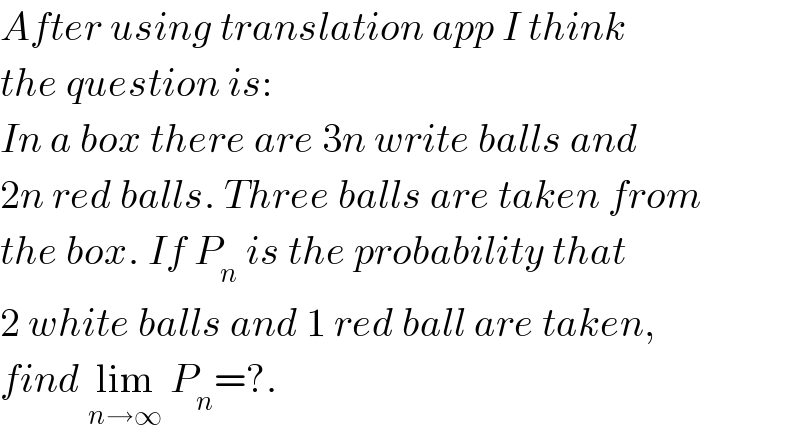
Question and Answers Forum
Previous in Probability and Statistics Next in Probability and Statistics
Question Number 96780 by mr W last updated on 04/Jun/20

Commented by mr W last updated on 04/Jun/20

Commented by mathmax by abdo last updated on 04/Jun/20

Commented by mr W last updated on 05/Jun/20

Commented by john santu last updated on 05/Jun/20

Commented by mr W last updated on 05/Jun/20

